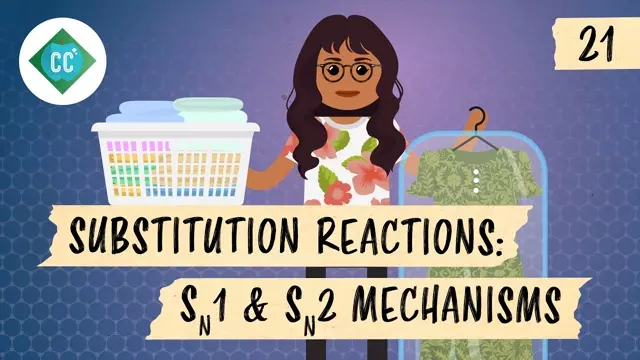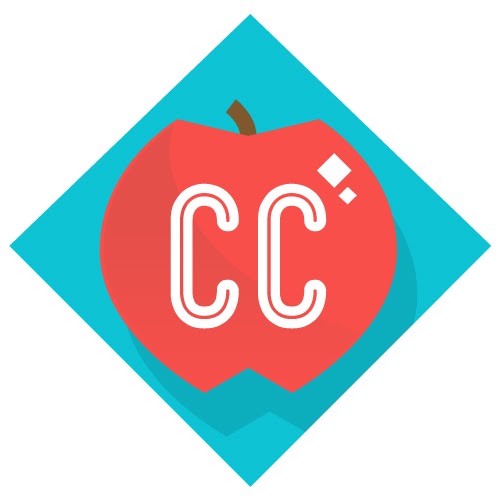2021-02-08
[public] 55.8K views, 5.02K likes, 18.0 dislikes audio only
We’ve already learned a bit about substitution reactions in organic chemistry and the two different paths they can follow: SN1 and SN2. In order to better predict the products of a substitution reaction and understand how they work, we need to be able to figure out which mechanism a reaction is likely to follow. In this episode of Crash Course Organic Chemistry, we’ll deepen our knowledge of substitution reactions by looking at factors like substrate structure and reaction conditions to determine whether SN1 or SN2 is the more likely mechanism.
Episode Sources:
Brookes, P., Lawley, P.D. “The Reaction of Mono-and Di-Functional Alkylating Agents with Nucleic Acids,” , Biochem. J., 1961, 80, 496-503.
Copley, Shelley, D., “Microbial dehalogenases: Enzymes recruited to convert xenobiotic substrates,” Current opinion in Chemical Biology, 1998, 2, 613-617.
Janssen, D. B., Scheper, A., Dijkhuizen, L, Witholt, B., “Degradation of halogenated aliphatic compounds by Xanthobacter autotrophicus GJ10,” Applied and Environmental Microbiology, 1985, 29, 673-677.
Silberstein, M., Dambrosky, J., Vajda, S., “Exploring the binding sites of the haloalkane dehalogenase Dhla from Xanthobacter autotrophicus GJ10,” Biochemistry, 2007, 46,9239-9249.
Brunning, Andy, “The chemistry of dry cleaning,” https://cen.acs.org/articles/95/i45/Periodic-graphics-chemistry-dry-cleaning.html
McCoy, M., “Dry Cleaning Dreams,” Chemistry and Engineering News, 2005, 83(46), 19-22.
Series Sources:
Brown, W. H., Iverson, B. L., Ansyln, E. V., Foote, C., Organic Chemistry; 8th ed.; Cengage Learning, Boston, 2018.
Bruice, P. Y., Organic Chemistry, 7th ed.; Pearson Education, Inc., United States, 2014.
Clayden, J., Greeves, N., Warren., S., Organic Chemistry, 2nd ed.; Oxford University Press, New York, 2012.
Jones Jr., M.; Fleming, S. A., Organic Chemistry, 5th ed.; W. W. Norton & Company, New York, 2014.
Klein., D., Organic Chemistry; 1st ed.; John Wiley & Sons, United States, 2012.
Louden M., Organic Chemistry; 5th ed.; Roberts and Company Publishers, Colorado, 2009.
McMurry, J., Organic Chemistry, 9th ed.; Cengage Learning, Boston, 2016.
Smith, J. G., Organic chemistry; 6th ed.; McGraw-Hill Education, New York, 2020.
Wade., L. G., Organic Chemistry; 8th ed.; Pearson Education, Inc., United States, 2013.
***
Watch our videos and review your learning with the Crash Course App!
Download here for Apple Devices: https://apple.co/3d4eyZo
Download here for Android Devices: https://bit.ly/2SrDulJ
Crash Course is on Patreon! You can support us directly by signing up at http://www.patreon.com/crashcourse
Thanks to the following patrons for their generous monthly contributions that help keep Crash Course free for everyone forever:
Christine Phelan, Nick, DAVID MORTON HUDSON, Perry Joyce, Scott Harrison, Mark & Susan Billian, Junrong Eric Zhu, Alan Bridgeman, Jennifer Smith, Matt Curls, Tim Kwist, Jonathan Zbikowski, Jennifer Killen, Sarah & Nathan Catchings, Brandon Westmoreland, team dorsey, Trevin Beattie, Eric Koslow, Indika Siriwardena, Khaled El Shalakany, Shawn Arnold, Siobhán, Ken Penttinen, Nathan Taylor, William McGraw, Laura Damon, Andrei Krishkevich, Eric Prestemon, Jirat, Brian Thomas Gossett, Ian Dundore, Jason A Saslow, Justin, Jessica Wode, Mark, Caleb Weeks
__
Want to find Crash Course elsewhere on the internet?
Facebook - http://www.facebook.com/YouTubeCrashCourse
Twitter - http://www.twitter.com/TheCrashCourse
Tumblr - http://thecrashcourse.tumblr.com
Support Crash Course on Patreon: http://patreon.com/crashcourse
CC Kids: http://www.youtube.com/crashcoursekids
/youtube/video/69-FZDJ_eoI
/youtube/video/Wxn5jvR-ffQ?t=143
/youtube/video/Wxn5jvR-ffQ?t=179
/youtube/video/Wxn5jvR-ffQ?t=241
/youtube/video/Wxn5jvR-ffQ?t=364
/youtube/video/Wxn5jvR-ffQ?t=479
/youtube/channel/UCX6b17PVsYBQ0ip5gyeme-Q
youtube.com/channel/UCwTZ-JLF5FQ3EmQ2nPaS-lg
https://www.patreon.com/crashcourse
/youtube/video/bSMx0NS0XfY

